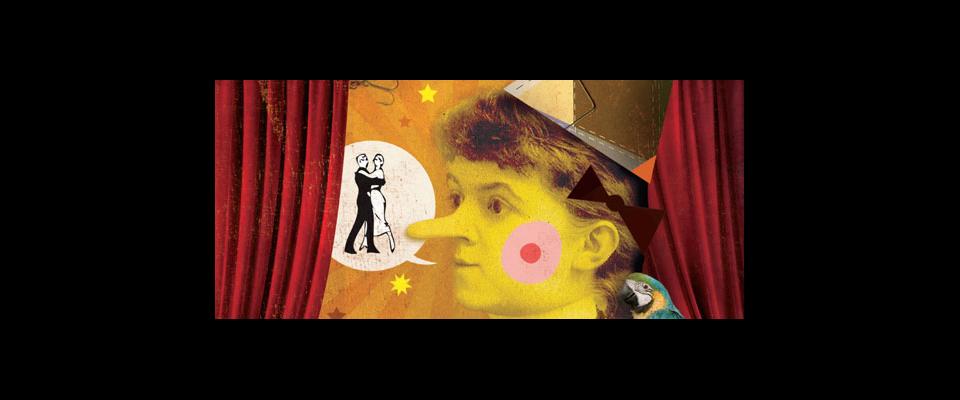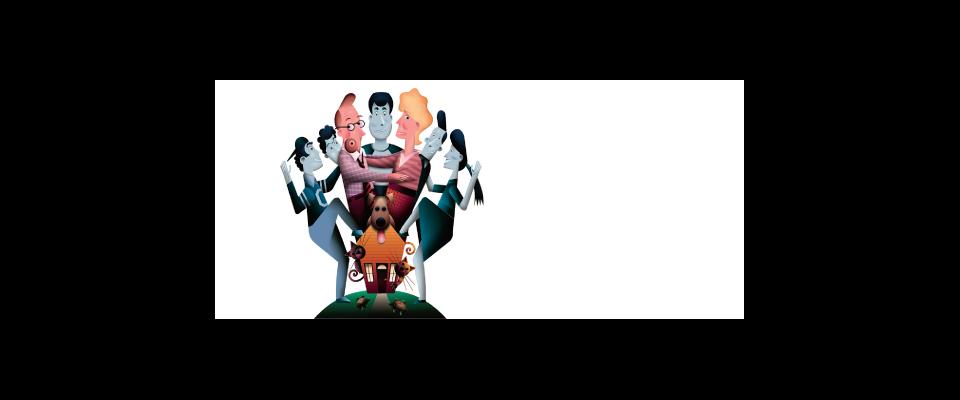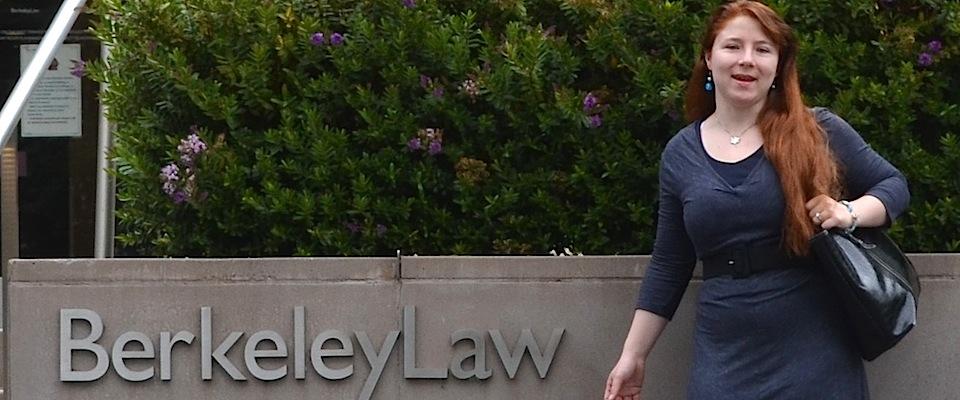Broken hip announcements were a dark opera as I entered adulthood. Both parents. Then the parents of many of my friends and the parents of their friends’ friends as we marched toward middle age. For each of the afflicted, it was the last stumble toward the grave. For their offspring, who had tumbled through the tear gas of the Vietnam era, it was strange to witness: falling down, then pneumonia, confusion, intestinal bleeding, bladder infections, dementia, stroke, and within a year or at most two, the tomb. All from a broken bone from an unseen sliver of ice or a crumbled curb.
Having concluded middle age, I no longer find it strange. Over three hundred thousand Americans are hospitalized each year for fractured hips. One in three people over 65 suffers a serious fall each year. According to the Centers for Disease Control and Prevention, falls are the leading cause of injury and death for American seniors.
Fall prevention has risen to the top of the agenda in elder health centers across the United States and Europe, and, not surprisingly, a key initiative of CITRIS (Center for Information Technology Research in the Interest of Society) and Banatao Institute, based at UC Berkeley, where David Lindeman, who earned his PhD and MSW from Cal, is CITRIS’s Director of Health Initiatives.
“Like smart cars, the new smart home is or will be a total sensory environment. What it all comes down to is data management.”
Lindeman’s team recently conducted a daylong series of seminars on new technologies aimed at protecting us from the hazards of age at this year’s Global Congress of Gerontology and Geriatrics in San Francisco. He and his colleagues offer a glowing array of technologies, or, as he calls them, “gizmos” that can monitor everything from daily mood shifts to heart rhythms, and even edible chips that track digestive function. It’s all part of today’s info-smart lifestyle movement. We have cars that tell you if your seat and seat belt are correctly positioned, if your tires are properly inflated, and if you are going to bump into the guy behind you. The new fully monitored smart home will go way beyond safety grips in the bathing zone and non-slip tiles. It will offer sound and visual monitors that warn you when you’re losing your balance, and it will record stumbles. And this information can be instantly beamed to a remote care center.
Lindeman said he is working with a Berkeley startup, SkyDeck-funded SafelyYou, which is developing visual monitors that are essentially low cost cameras placed in the rooms of people living in senior communities in California. “You’re being monitored 24/7 in terms of your mobility, how you ambulate,” he explained. “The pilot program, he says, was successful. The cameras helped researchers and family members to see progressively unstable movements and “anticipate and thus reduce falls by 80 percent.”
“Like smart cars,” David Lindeman explained in his opening talk, “the new smart home is or will be a total sensory environment. What it all comes down to is data management.”
Working with an ever-growing array of startups, the CITRIS center focuses specifically on how all these billions of bits of personal and environmental data can be merged together in a central monitoring station or series of stations, where it can be interpreted by researchers and caregivers, who in turn can either modify the living space to make it less risky or, as is almost always inevitable, transfer the patient to a still more intense assisted living location.
What’s available to households in Hillsboro or the Berkeley Hills of course is not quite the same as what public housing residents can expect in Richmond or in the cheese making villages of outer Sonoma—both because of the cost of installation and the absence of data transmission and interpretation networks.
In tech talk, that’s what’s called the digital divide—the gap those of us who are mostly wired into these new data environments and those who are not. Lindeman believes that divide will profoundly change the future discourse on human rights.
“People now talk about health care as a human right,” he elaborated, “but what we’ll soon be addressing is universal access [to the data stream] as a right. At the top end when you walk into a room a voice recognition and response system will be there and ask you what you need.”
Who will pay for all these preventive and protective health gizmos in our new smart residences is one obvious question. But there are others. Who doesn’t want security for frail family members, ourselves included, especially if it keeps us out of hospitals which in themselves are doorways to death? I asked one almost elderly woman seated near me in the audience who was applauding at the end of David Lindeman’s talk what she thought about the presentation. “Amazing, just amazing!” she responded. “What about solitude?” I asked. She hesitated, drew herself back in her chair, and answered, “Oh.”
In a later conversation David Lindeman acknowledged the potential issue of social isolation. It’s the existential reality for the vast majority of elderly people living alone, and there is overwhelming epidemiological evidence that social isolation is directly linked to many of the illnesses common among seniors.
Preventing falls will save individuals, families, and the government hundreds of millions of dollars in hospital bills.
“I’ve been so geared toward reducing isolation, connecting people,” he said. For him, “the critical nature of social connection and connectiveness,” and their “tremendous evidence-based effectiveness on well-being, longevity, reducing chronic condition” are key.
He cited a company called Rendever, a new startup advised by the MIT AgeLab, that specializes in creating virtual leisure experiences. “They are connecting people living in communities, but if you don’t have mobility, you can take a virtual tour of the Grand Canyon or you can be in Paris…You can go back to your home community. What they’re trying to do is create a platform where you’re connected wherever you want to be.” Prevention, though, remains the main focus, because there is more at stake for society than just the health and welfare of it’s oldest citizens. As Lindeman pointed out, preventing falls will save individuals, families, and the government hundreds of millions of dollars in hospital bills.
“Smart life” designers see the total sensory environment as extending well beyond the domain of healthcare. Joseph Coughlin, founder and director of MIT AgeLab, is even more enthusiastic than his Berkeley colleague Lindeman.
Keynoting Lindeman’s daylong program on tech health, he rattled off a long list of robotic features that will change our lives—from toilets adjusted to each individual’s needs to talking toasters for your morning breakfast to kitty litter monitors that remind you when it’s time to change the “sensory” box, and, in another context, robots that can replace waiters and prepare 250 mixed drinks at a self-service bar.
Back in the zone of fall prevention and dementia surveillance, Coughlin bore down on how tech monitoring will change everything about care and personal relations in our daily lives. He admonished his audience to rethink even the language they use. “We’re serving clients not patients. We’re going to be designing a lifestyle for our clients and we have to ask older people what they want? What kind of lifestyle do they envision and desire?”
The “smart life”—which already includes chips that can be implanted in mom’s shoes to warn her family that she’s unsteady on her feet—aims at risk reduction, fixing us before we’re broken. For the baby boom generation, who grew up reading Brave New World and 1984, it is at once alluring and deeply unsettling—this reality of total sensory observation. “How would Thoreau have reacted to this dazzling prospect?” I asked Lindeman. He paused for a long 20 seconds. “He might have tied a rope around his neck and jumped in his pond. But we don’t and can’t live like Thoreau lived 200 years ago.”
Frank Browning wrote this article with fellowship support from New America Media, the Gerontological Society of America, and the Silver Century Foundation.





















